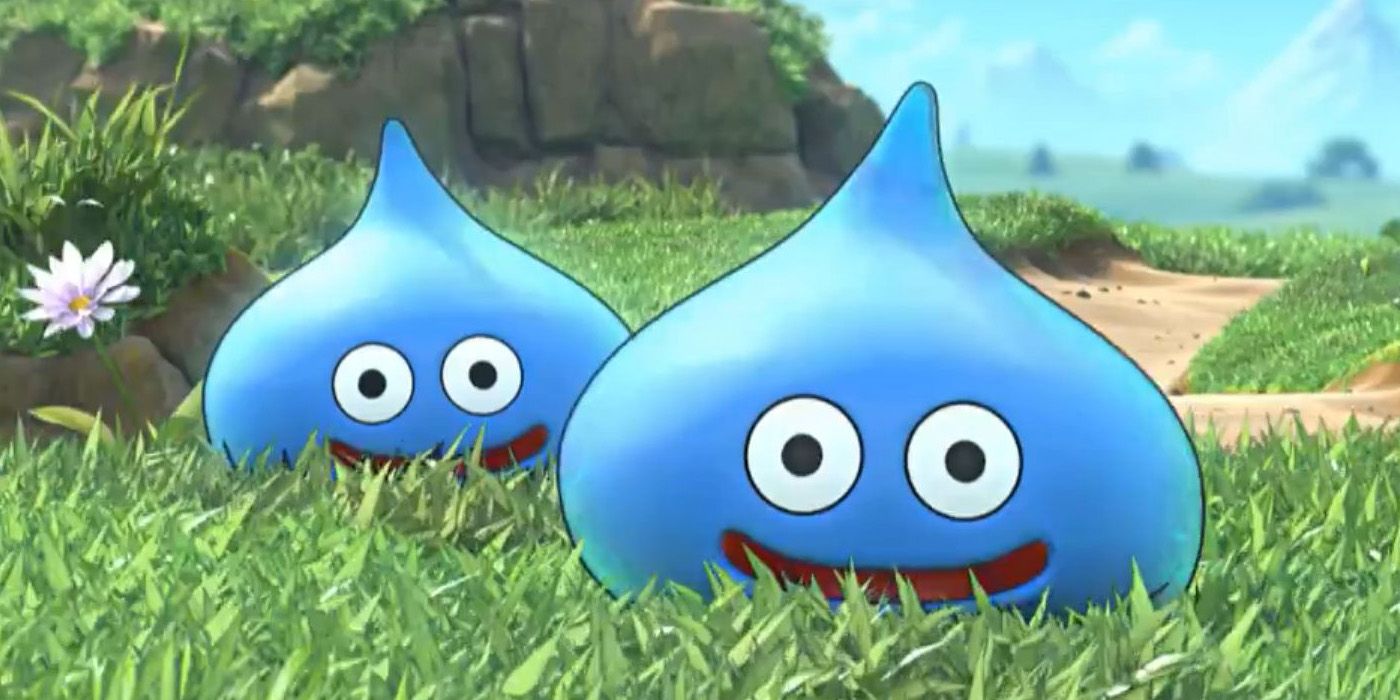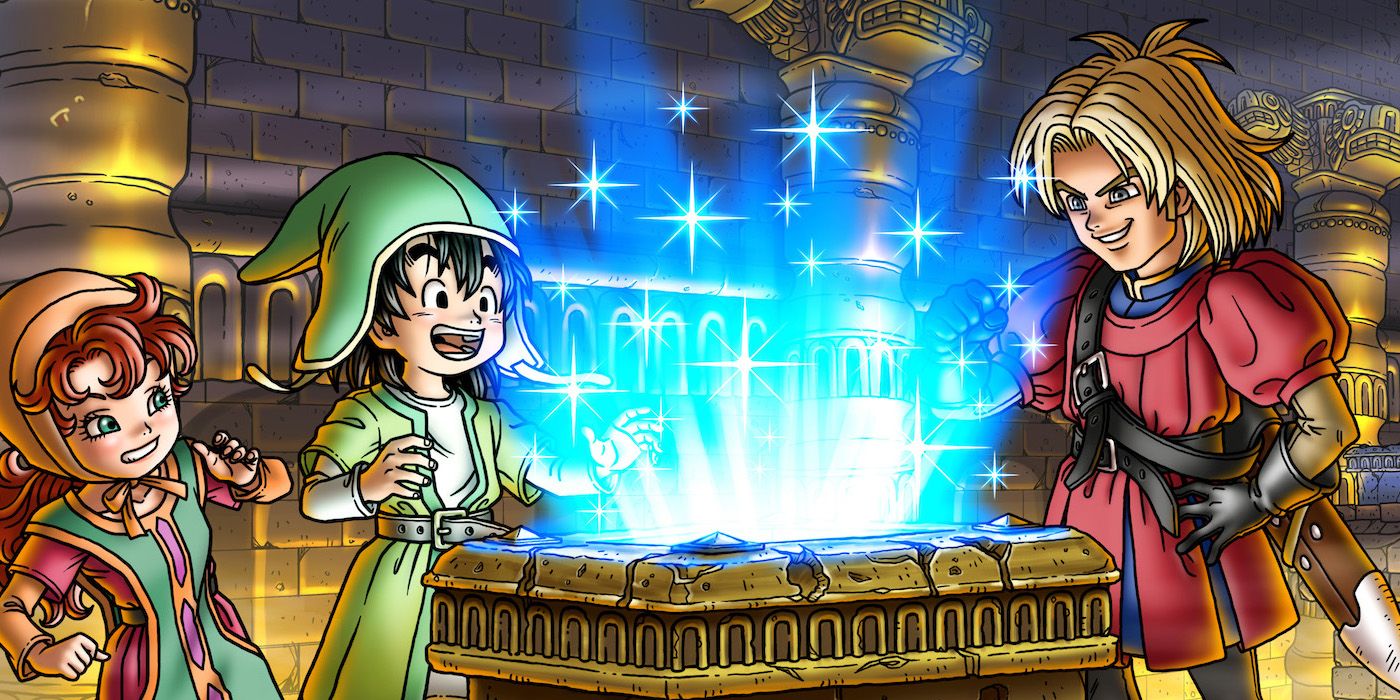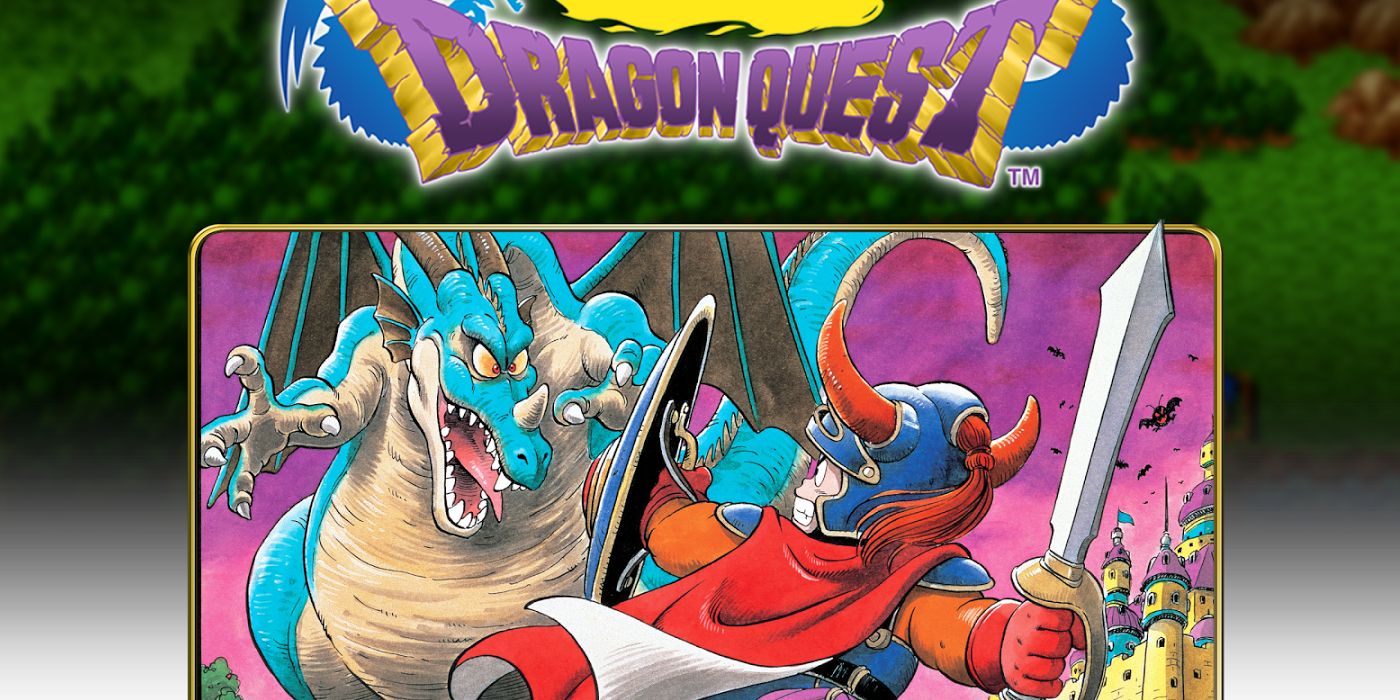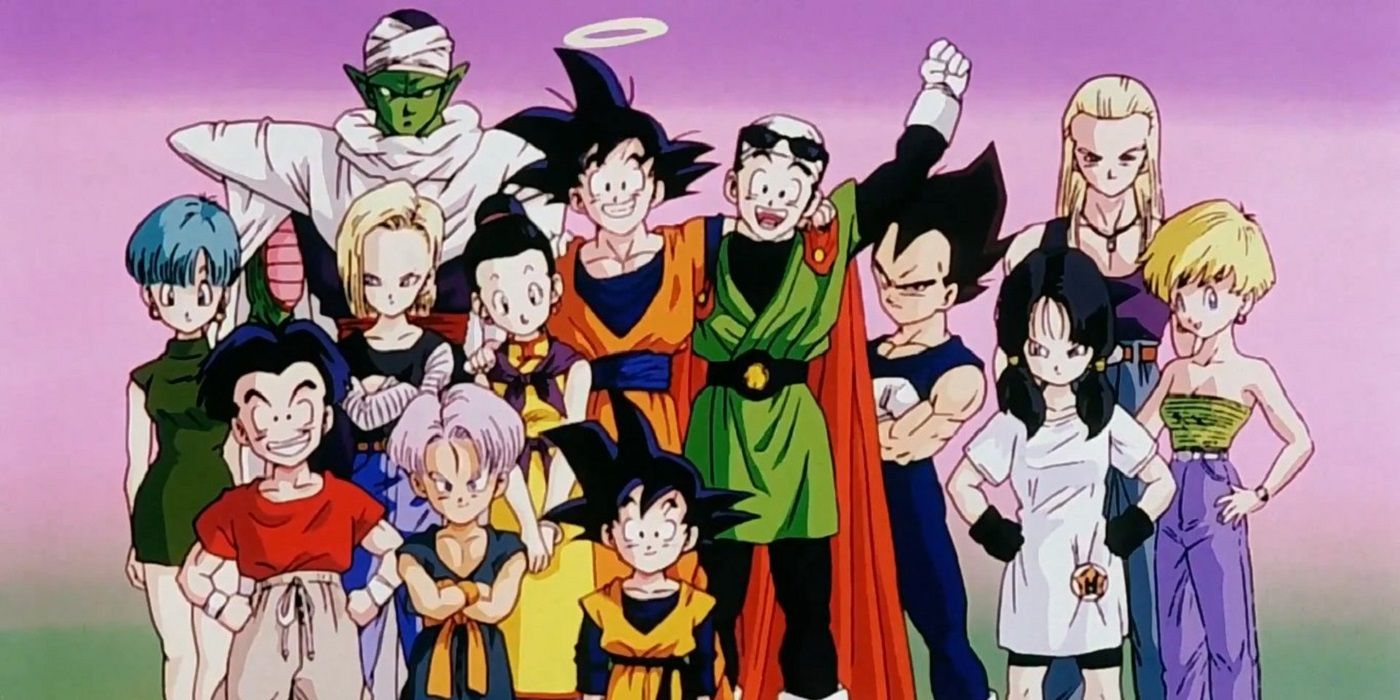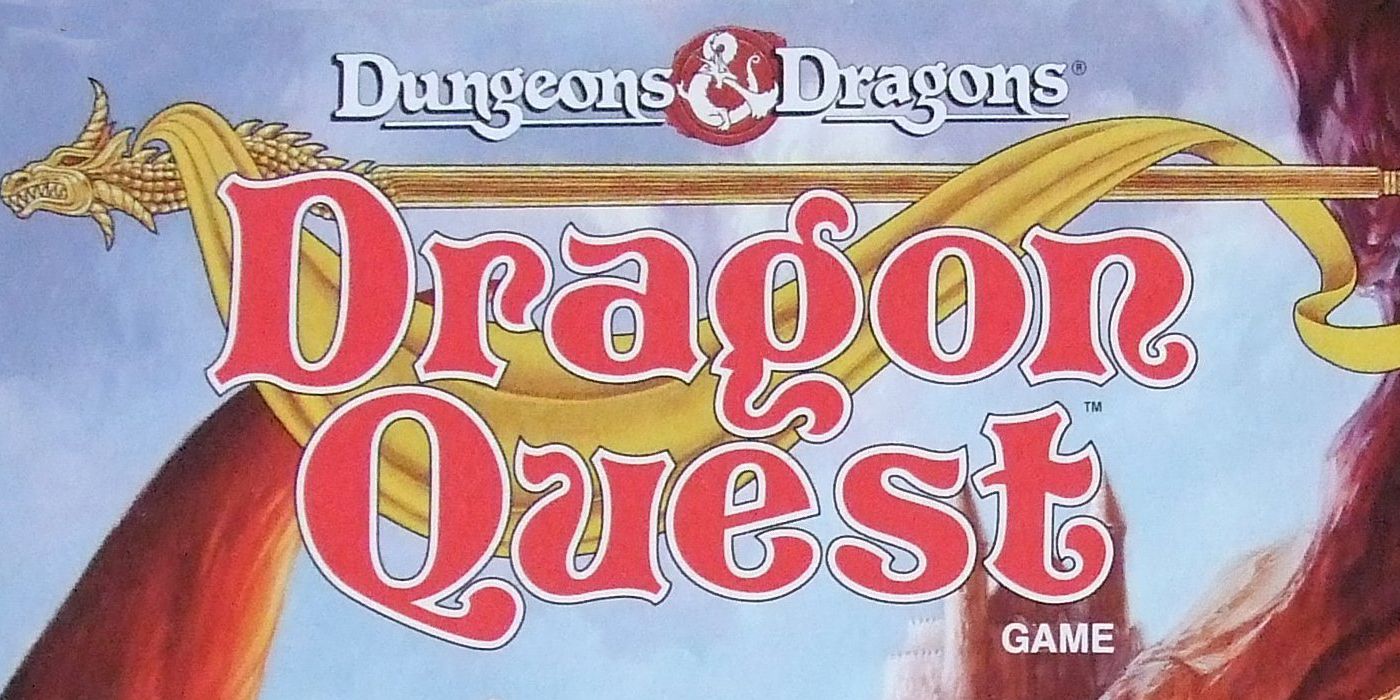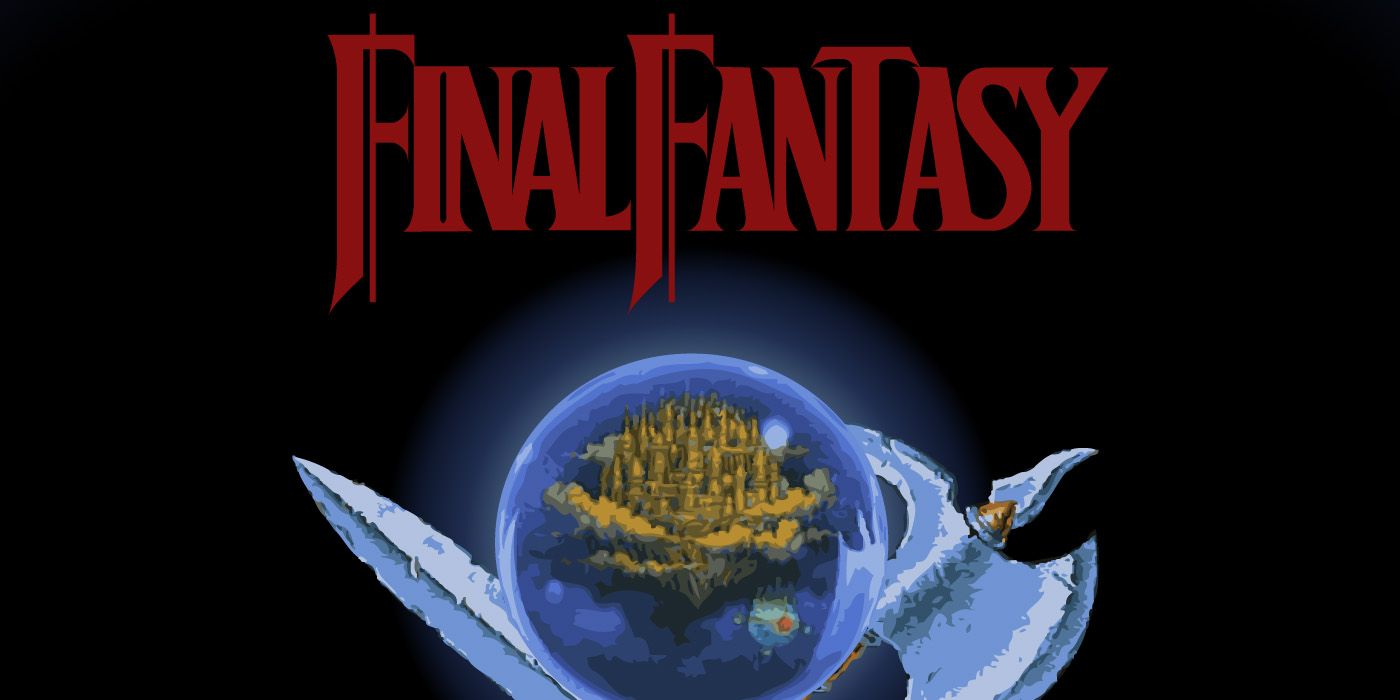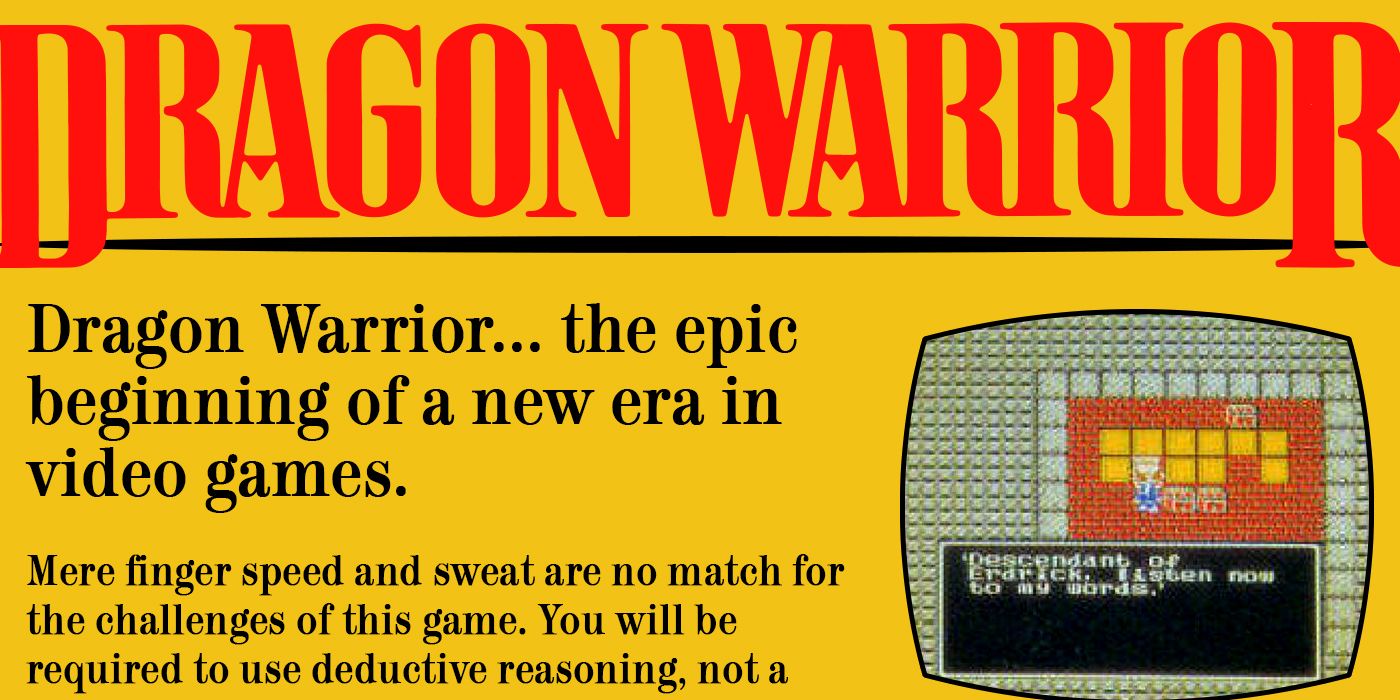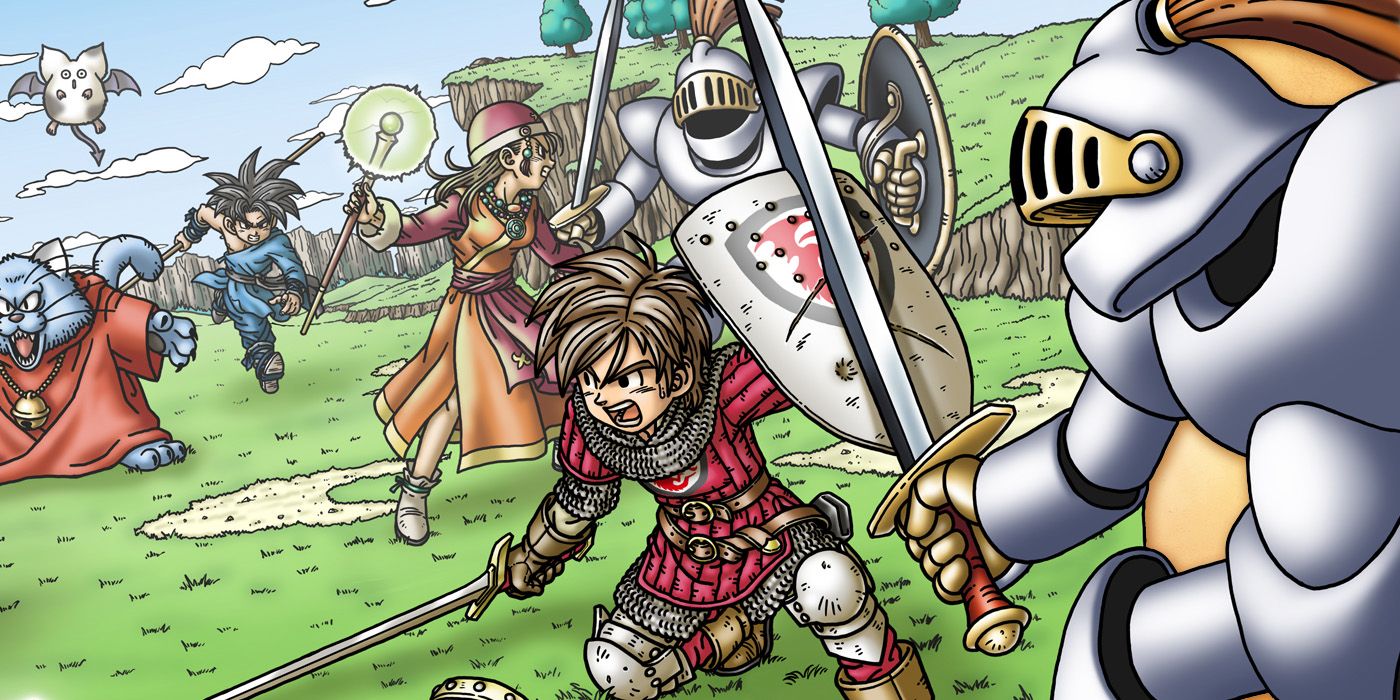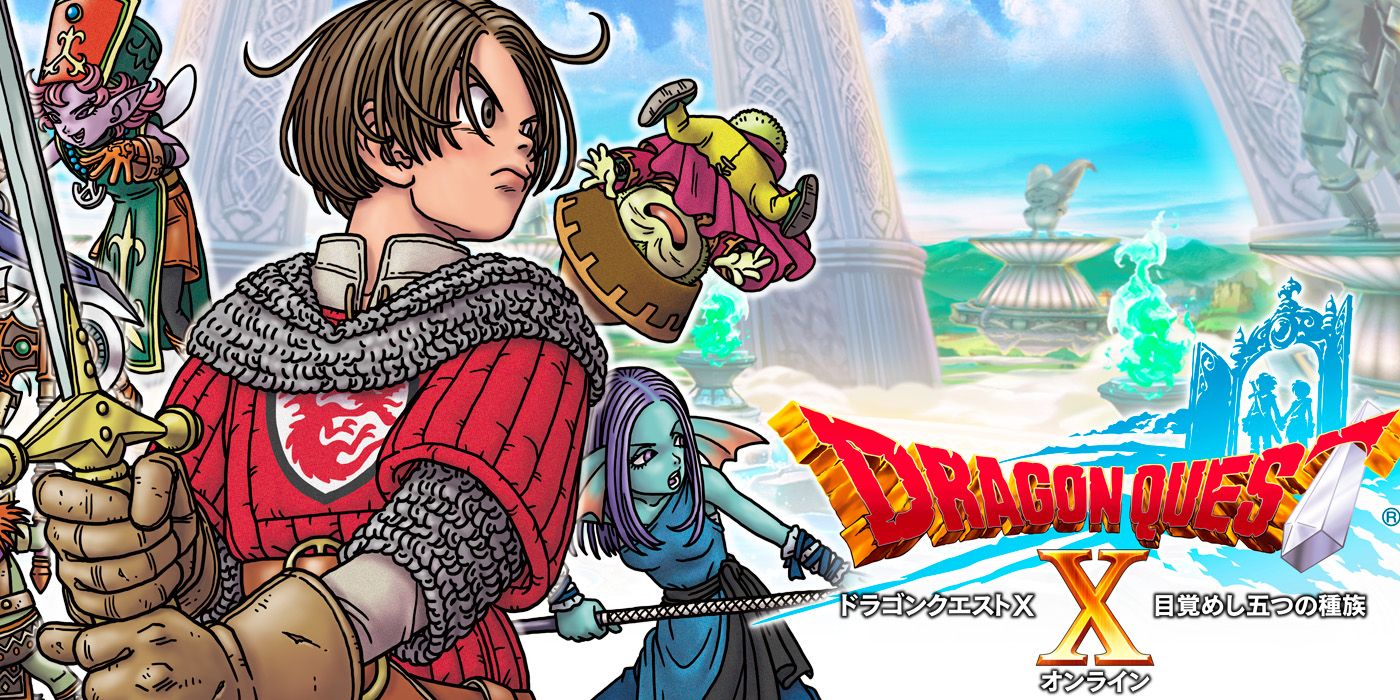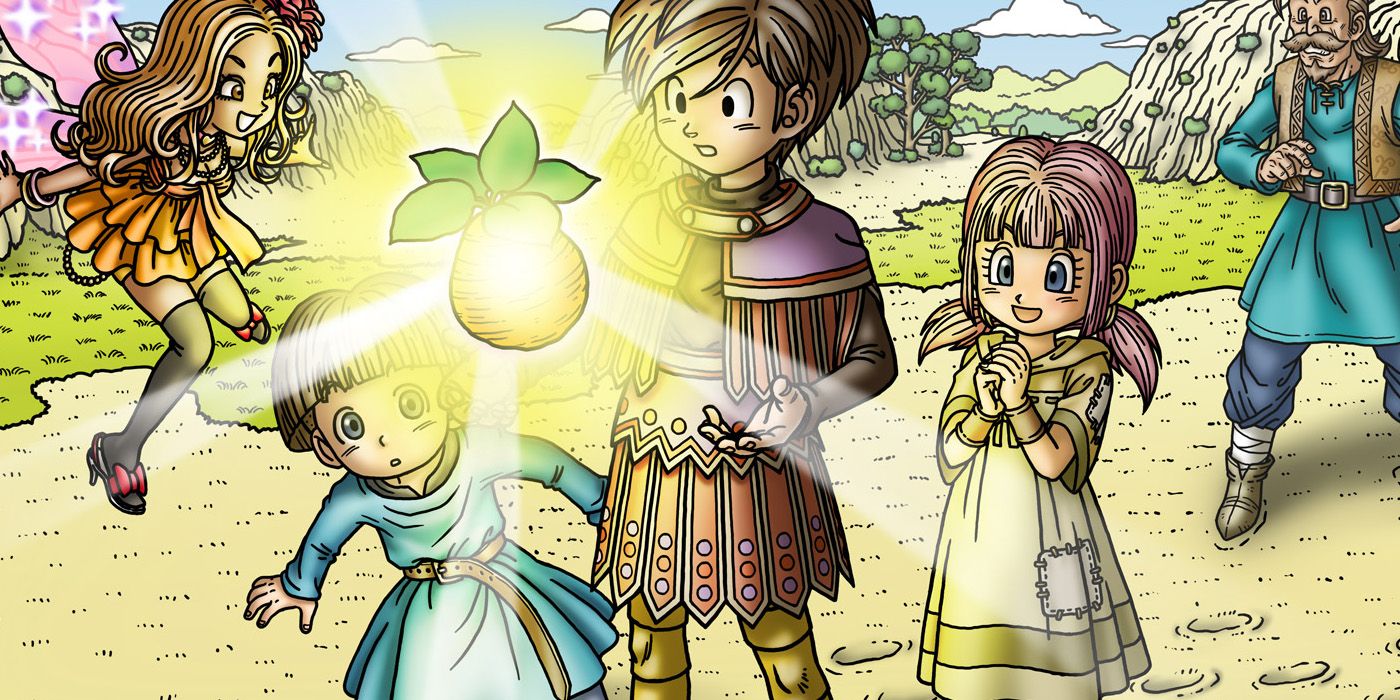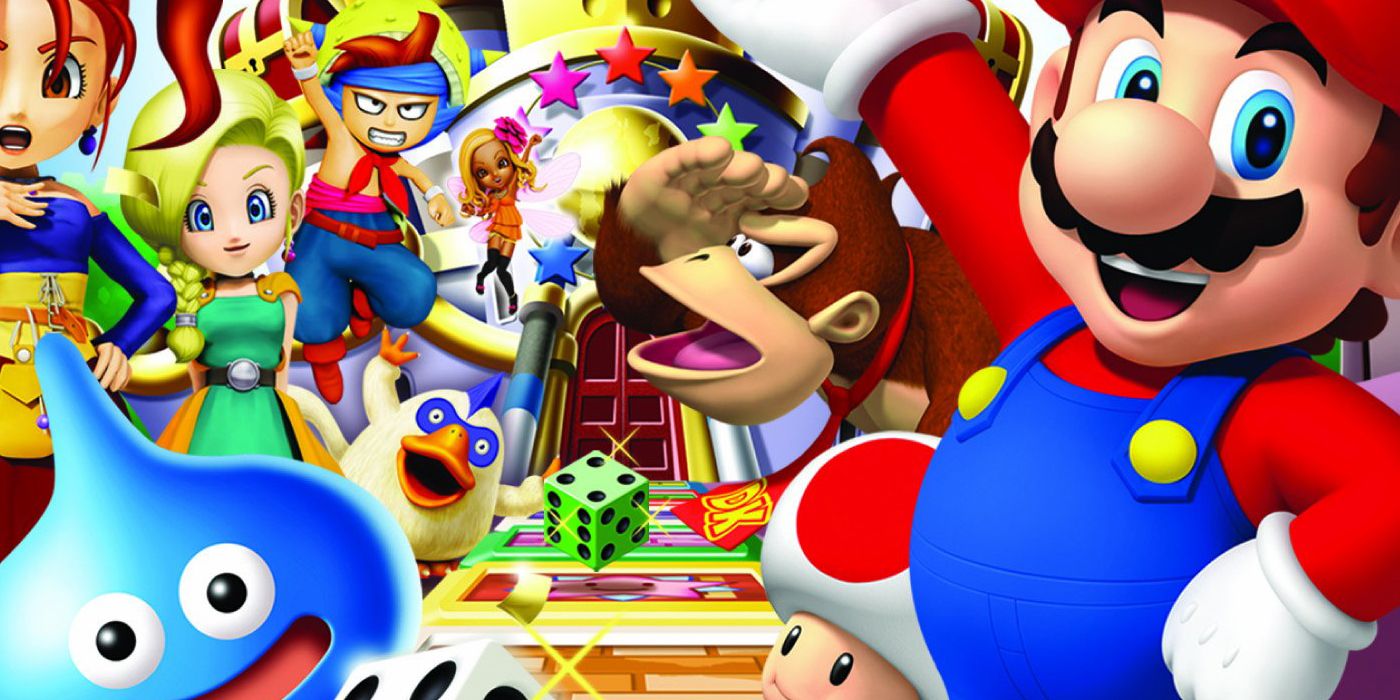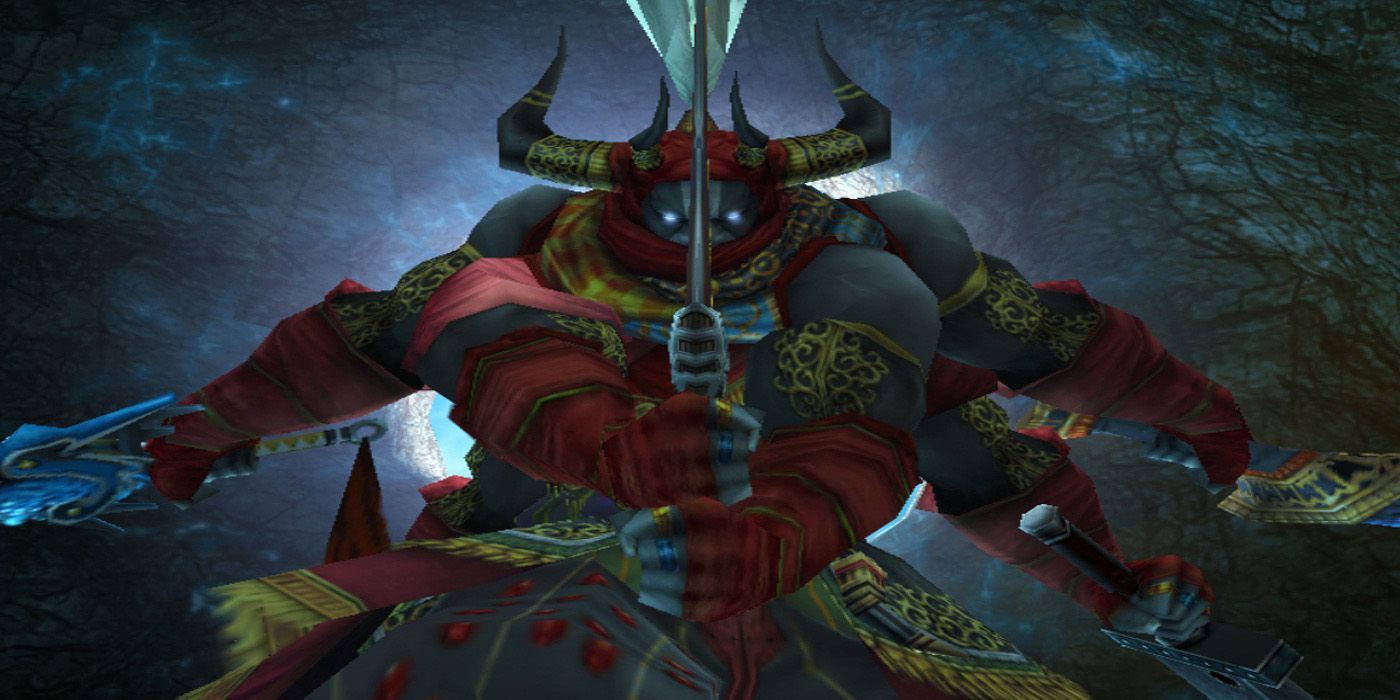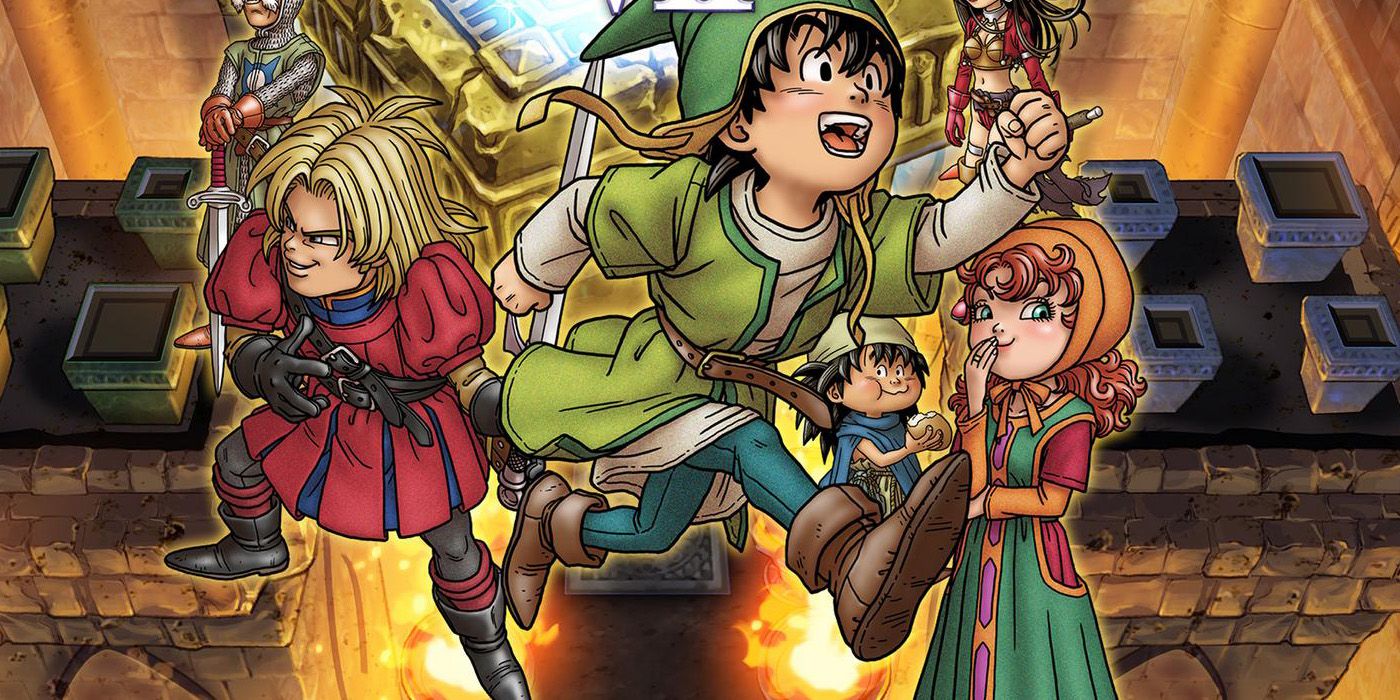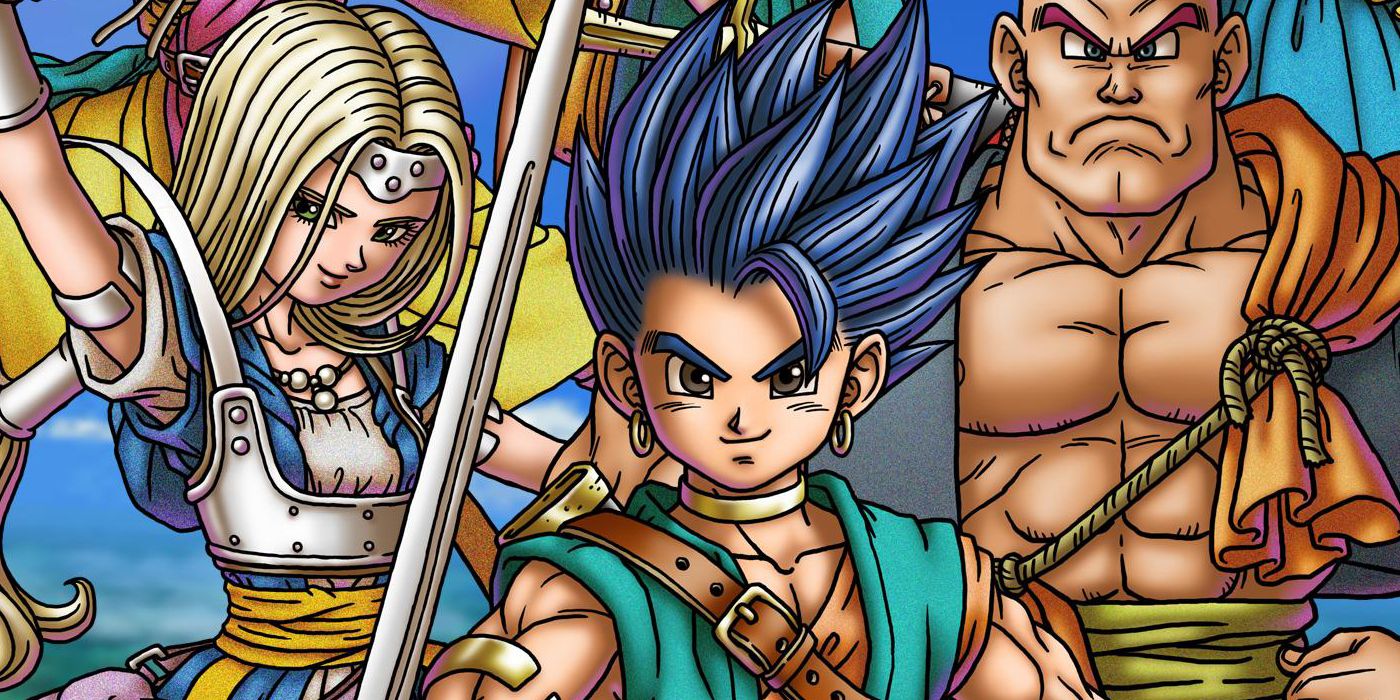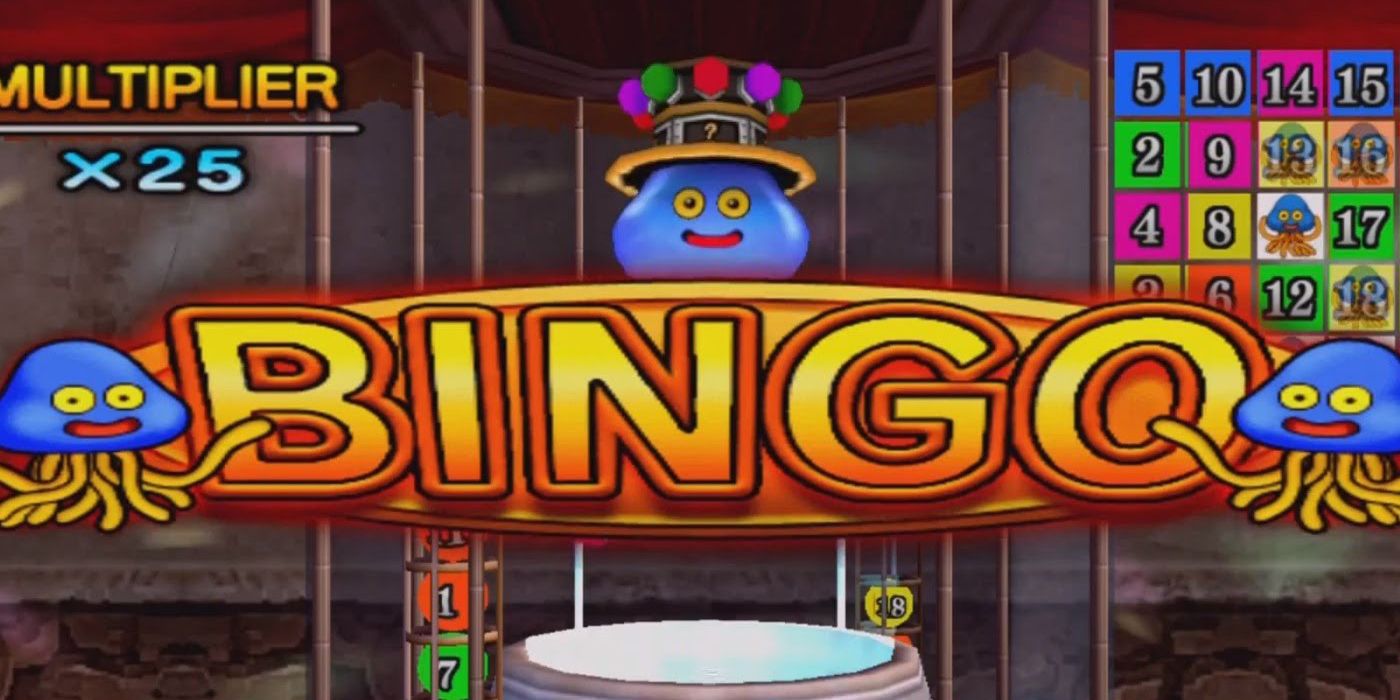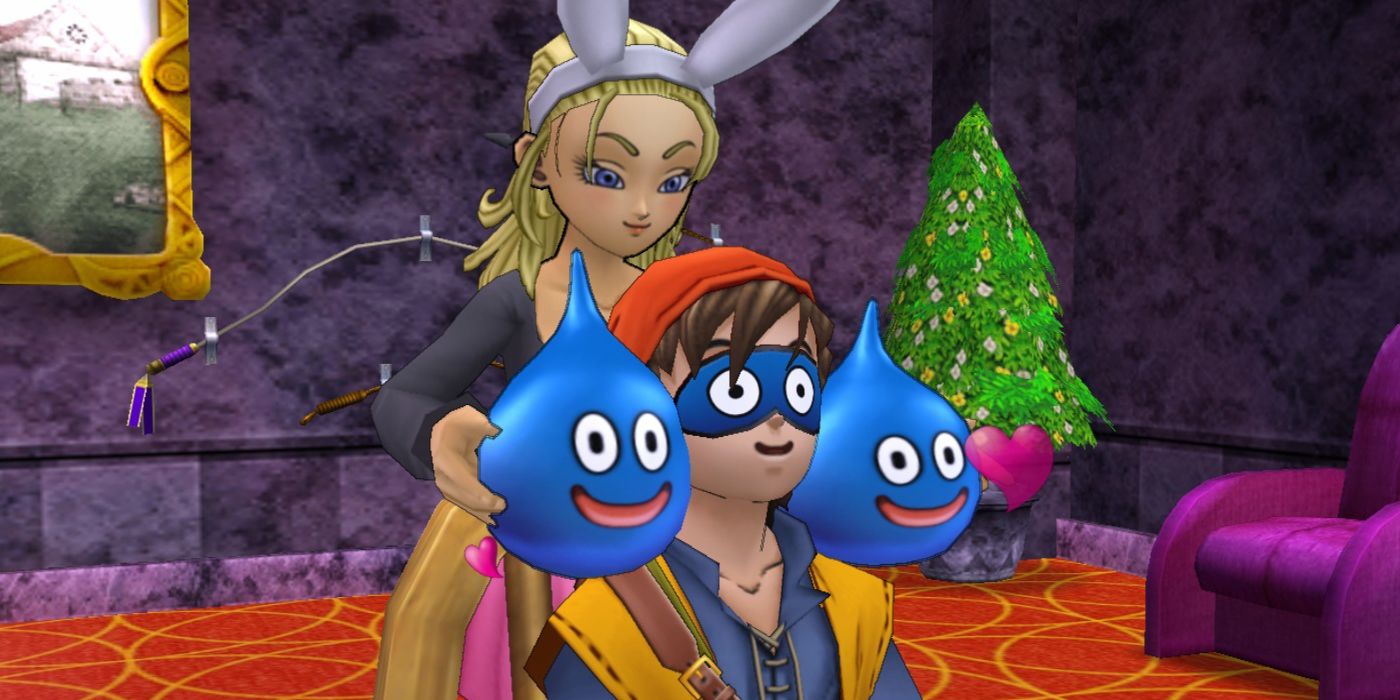The last main series Dragon Quest game to be released outside of Japan was Dragon Quest IX: Sentinels of the Starry Skies for the Nintendo DS in 2009. After a huge letter campaign from a group of fans in France, Square Enix were convinced to bring two more games from the series to the west. These are Dragon Quest VII: Fragments of the Forgotten Past, released on the 16th of September 2016, and Dragon Quest VIII: Journey of the Cursed King which will come out in 2017. Both games are coming to the Nintendo 3DS, and signify the return of this hugely popular JRPG series to the English speaking world.
Much like its former rival, Final Fantasy, the Dragon Quest series has a long and interesting history, especially with the attempts to make this series a mega hit in the America, in the same way that it is in Japan.
With the series receiving a new lease of life on handheld systems, and with the Minecraft inspired Dragon Quest Builders coming out in October, it is time to delve into the secrets of this long running franchise. From it's Beatles-like popularity in Japan, to the bizarre fetishes of its creators influencing its design, here are 15 Facts You Didn’t Know About Dragon Quest Games.
15. It Was Inspired By Some Of The Biggest RPGs From The West
The original Dragon Quest was released in 1986 by developer Enix. The series would go on to become one of the most beloved franchises in Japan. Each new Dragon Quest game is met with critical acclaim and financial success in its homeland.
While the series is most loved in Japan, the Dragon Quest games owe a lot to the western developed titles that inspired its creation. Series creator Yuji Horii has explained that Dragon Quest combined the best elements of two other games, Wizardry and Ultima.
Wizardry was a series of first-person RPG's developed by Sir-Tech, where you controlled a party of adventurers as they explored dungeons. Despite being made by an American developer, the Wizardry games were hugely popular in Japan, with several spin-offs of the series only being released there. Dragon Quest took inspiration from Wizardry's first person battle scenes for its own combat system, where fighting enemies took place on a different screen than the overworld.
Ultima was developed by the British company Origin Systems. The original Ultima had a massive overworld for the players to travel and explore. This element inspired the similar overworld used in Dragon Quest.
By combining the first-person dungeon crawling of Wizardry and the huge, explorable overworld of Ultima, the Dragon Quest series created its own identity that took the Japanese gaming world by storm.
14. The Creator Of Dragon Ball Z Has Designed Every Character & Monster In The Dragon Quest Series
Akira Toriyama is best known as the creator of Dragon Ball Z, one of the most successful anime & manga series of all time. That is not to say Dragon Ball Z is the only thing he's ever done. He had another hit manga series called Dr. Slump that was released before Dragon Ball. He also worked on many classic video games, such as Chrono Trigger and Blue Dragon.
Outside of Dragon Ball Z, Toriyama's best known works are his designs for Dragon Quest. He has been the character and monster designer for every game in the series. To those familiar with Dragon Ball or Chrono Trigger, his style should be immediately recognisable. Even with the primitive graphics of the original Nintendo Entertainment System, Toriyama's distinctive art shines through. With so many characters appearing in both DQ and DBZ, it's inevitable that some designs get reused - so keep any eye out the next time you're playing!
13. The Slime Monster Is Dragon Quest's Mascot
In most of the Dragon Quest games, the first enemy you are likely to encounter is the Slime. This creature may be Akira Toriyama's most iconic design outside of the Super Saiyans. The Slime is a blue blob in the shape of a Hershey's Kiss, with a big smile on its face. The sheer simplicity of its design, coupled with its infectious happiness has made the Slime the official mascot of the Dragon Quest series.
In Japan, the Slime holds the same level of fame as Pikachu from Pokémon or the Chocobo from Final Fantasy. It is one of the most popular Dragon Quest figures in merchandise, such as plushies. While the basic blue Slime is the most popular form, there are numerous other variants such as the King Slime (a bigger version of the Slime with a crown on its head), Metal Slime (a grey version of the Slime with insane defence, but gives a massive amount of experience points if defeated), and the Slime Knight (a green version, who is being ridden by a small knight), to name but a few.
The Slime is so popular, it has even had its own line of spin-off games. There is a trilogy of titles known as Dragon Quest Heroes: Rocket Slime, where the main character is a Slime monster. Only the second game in the series has made it outside of Japan.
12. The Series Had To Change Its Name In The West Because Of Dungeons & Dragons
Ever since the release of the first Dragon Quest game on the Nintendo Entertainment System, the name of the series had to be changed in America due to a copyright issue. Until the release of Dragon Quest VIII in 2005, the series was referred to as Dragon Warrior.
The reason for this name change was due to a company called TSR (Tactical Studies Rules), who were the creators and publishers of the popular tabletop role-playing game Dungeons & Dragons. In 1980, a company called Simulations Productions (SPI) released a tabletop game called DragonQuest. SPI were bought out by TSR in 1983, and they continued to release DragonQuest products until the late 1980s.
It was because of the existence of DragonQuest, that Dragon Quest had to change its name, due to fear of a copyright lawsuit. The games were called Dragon Warrior until 2001, with the last being Dragon Warrior VII on the PlayStation. By the time Dragon Quest VIII was released on the PlayStation 2, the copyright had expired, allowing Square Enix to snap up the rights to the name.
11. The Original Final Fantasy Had An Easter Egg Referencing The Series
With both the Dragon Quest and Final Fantasy series now being owned by the same company (due to Enix and Squaresoft merging in 2003), there is no longer any outright competition between the two. This was not always the case, however. The two series were rivals for over fifteen years, in terms of both sales and philosophy. The Dragon Quest series was always the bigger hit in Japan, and usually stuck to a winning formula and their own established traditions. Final Fantasy on the other hand was a big hit internationally, and would often experiment with different play styles with each new instalment.
When the original Final Fantasy was released in America in 1990, it contained a reference to the original Dragon Quest that some might consider an insult.
In the town of Elfheim, there exists a gravestone that reads "Here lies Erdrick, 837-866, R.I.P". Erdrick is the name of the protagonist of Dragon Quest.
Oddly enough, this reference was exclusive to the American localization of the game. In the original Japanese version, the name on the tombstone is Link, the hero of The Legend of Zelda.
10. Nintendo Power Used To Give Free Copies Of Dragon Quest Out To Subscribers
The early Dragon Quest games (known as Dragon Warrior in America) were not the success that they were in Japan. The first four titles in series were released on the Nintendo Entertainment System, but the lack of sales prevented the fifth and sixth games from being released on the Super Nintendo. The series did not return until Dragon Warrior VII on the PlayStation, at which point the JRPG had become a popular genre due to the success of Final Fantasy VII.
When the original Dragon Warrior was being prepared for release, Enix and Nintendo had expected it to be the same runaway success that it had been in Japan. The port of the game released in the west was actually better than the original Japanese version, due to having a battery backup save system and improved graphics. Dragon Warrior was not well received upon its initial release, however, with reviewers complaining about the primitive graphics and slow story progression.
The lukewarm reception of the game led to Nintendo being stuck with an overstock of Dragon Warrior cartridges. It was around this time that the magazine Nintendo Power was becoming one of the most influential gaming publications in America. They offered Nintendo a solution to the problem. In 1990, Nintendo Power offered a free copy of Dragon Warrior to everyone who subscribed to the magazine. This allowed Nintendo to shift the excess stock, whilst growing Nintendo Power's readership (meaning Nintendo would have a larger audience to advertise to.)
9. The Urban Legend Of The "Dragon Quest Law"
There was once a long-running urban legend on the Internet about something called the "Dragon Quest Law". The rumour suggested that a law was passed by the Japanese government in the 1980s, one that forced the makers of the Dragon Quest series to only be able to release new games on the weekend. While no such law exists, there is a surprising amount of truth to the legend.
When Dragon Quest III was released on Wednesday the 10th of February 1988, there were reports of mass-truancy among school children (over 300 cases), and an even higher number of adults calling in sick to work all across Japan. The legend states that the Japanese government received so many complaints from educators and employers, they were forced to draft a law that specifically named the Dragon Quest series as being unable to release new games on a weekday.
The truth of the matter is that Enix imposed this rule upon themselves. It was they who had received the complaints, and they were worried that it might affect the release of future games. Every Dragon Quest title from that point on was released on a weekend. This rule stayed in effect until the release of Dragon Quest X in 2012, which was released on a Thursday.
8. It Is Considered By Many To Be Japan's National Video Game (Even Over Mario)
The title of most recognisable video game character of all time is usually given to Mario (although some would argue that Lara Croft surpassed him during the PlayStation era). In his native Japan, however, there are many who would argue that Dragon Quest is the most popular video game series. It is considered by many to be Japan's national video game (despite the series generally focusing on settings and myths inspired by Medieval Europe).
To give only a few examples of Dragon Quest's popularity in Japan, it is one of the biggest selling video game franchises there, with over 64 million copies shipped. The MMORPG Dragon Quest X: Awakening of the Five Tribes Online is one of the biggest online-only games in the country. Both Dragon Quest X and XI are some of the very few games to be announced for the Nintendo NX. There are Dragon Quest themed bars and restaurants in Japan that manage to thrive, where most gimmick establishments fail.
The release of every new game in the series is considered a big deal in Japan, with pre-orders selling out within minutes, and lines of customers waiting outside of stores. In the same way that Pokémon GO went from being a simple cellphone game into a mainstream topic of conversation - Dragon Quest has always had that level of love and devotion in its homeland.
7. The Series Inspired The Hardware Of The Nintendo 3DS
One of the most popular features of the Nintendo 3DS is known as "Streetpass". If you carry your 3DS on your person and pass someone who also has their 3DS with them, then the two consoles will share information. Certain games make use of this feature in unique ways - if both players own a copy of Resident Evil: Revelations, then they will send each other extra ammo, and may appear as a super zombie in the Raid mode. If you both own Fire Emblem: Awakening, then you will get a chance to battle the other players team, and possibly earn their main character as a party member (if you can beat them).
The Streetpass feature was inspired by Dragon Quest IX: Sentinels of the Starry Skies for the Nintendo DS. The game had a feature called "Tag" mode, that acted in a similar fashion to Streetpass. If you had Dragon Quest IX in your DS while it was in Sleep mode (when the lid was closed), you would share items and treasure maps with other players you passed.
In an "Iwata Asks"interview, it was revealed that Japanese fans of the game used to arrange meetups where they could use the Tag mode to its fullest, and share lots of treasure maps at once. Upon seeing this reaction, it was decided that a similar function should exist in all big Nintendo games on the upcoming 3DS console.
6. Dragon Quest Has Officially Crossed Over With Both Mario And Final Fantasy
In Dragon Warrior III, a new minigame was added to the series, it was referred to as 'Pachisi', and was essentially a huge board game where the characters themselves moved across the board. You had to roll the dice to move, and it was essentially luck whether you found treasure or had to fight monsters. The game became popular among fans, and it returned in many later Dragon Quest titles.
Dragon Quest's creator, Yuji Horii, decided to turn this game into its own franchise. In 1991, Enix released Itadaki Street: Watashi no Omise ni Yottette, a version of the original Dragon Warrior III game that used a contemporary setting, and added money management elements that made it similar to Monopoly.
There were several more Itadaki Street games, until the fifth game in the series decided to go back to its roots. Dragon Quest & Final Fantasy in Itadaki Street Special on the PlayStation 2 was a new version of the game that added classic characters from both Dragon Quest and Final Fantasy.
All of these games stayed in Japan, except for one. Fortune Street for the Nintendo Wii was released in America and Europe, and combined characters from both Dragon Quest and the Mario series.
5. Final Fantasy XII Has A Huge Reference To The Original Dragon Quest
Despite both Dragon Quest and Final Fantasy coming under the same ownership in 2003, when Squaresoft and Enix merged, the recent games have very rarely referenced the other other. While the Fortune Street series has officially crossed them with the Mario universe, that was in a non-canon party game setting. A proper crossover between the two game series seems like an idea that would print money (especially in Japan), but Square Enix has yet to do so.
One of the games in the Final Fantasy series did manage to include a significant reference to Dragon Quest. That game was Final Fantasy XII, and it involves a weapon known as the Wyrmhero Blade.
The Wyrmhero Blade is one of the most powerful weapons in the game. It is seen wielded by Gilgamseh, a recurring Final Fantasy character who travels the multiverse in search of powerful swords. Whenever the Wyrmhero Blade is swung, it uses sound effects from the Dragon Quest series. The appearance of the sword closely matches that of the sword of Erdrick (the protagonist of Dragon Quest).
There is also a hidden Dragon Quest reference within the Wyrmhero Blade. If you try and sell it at a store, the price you will get for it is 65, 535 gil. This is a reference to the number of maximum experience points the main character could earn in Dragon Quest. Reaching this maxed out experience level was an early gaming challenge that was popular among fans.
4. One Of The Secret Bosses In Dragon Quest VII Is God
It would probably be quicker to name all of the end bosses in JRPGs that didn't turn into a godlike monster at some point. It's just something that happens in a lot in Japanese games. In Final Fantasy alone you have Sephiroth, Kefka, Emperor Mateus (who does it twice in the PSP version of Final Fantasy II), The Creator (from Final Fantasy IV: The After Years), Exodus, Yu Yevon, Ultimecia, Orphan, and Bhunivelze. Those are just from the main games in the series.
Dragon Quest has not done this as often. The series tends to favour demons, dragons and evil wizards as its final encounters. One big exception to this is Dragon Quest VII, which gives you the option of taking on God in one of its optional post-game encounters.
While the previously mentioned Final Fantasy end bosses tended to look like over the top anime monsters, the God that appears in Dragon Quest VII is a lot closer to the stereotypical depiction of God in western society. He is an old white man with a big beard and robes, who lives in a dungeon that closely resembles Heaven. He is even named "God" when you fight him.
3. Dragon Quest VI Has The Most Satisfying Secret Boss In Gaming
One aspect of gaming that tends to only show up in JRPGs is the "Superboss". The Superboss are usually hidden boss fights against creatures who are harder to defeat than the actual end boss of the game. These are included as an extra challenge for die hard players, who want to test their skills to the fullest.
The problem with beating the Superboss is that they generally don't give you anything good. If you are strong enough to beat them, then there is nothing left that the game can reward you with. There is one game that managed to avert this, however, and that is Dragon Quest VI: Realms of Revelation.
Dragon Quest VI has one of the most annoying end bosses in video game history - the demon Mortamor. He has three different forms, each more frustrating to battle than the last. Once you beat him, you can reload your last save with a new dungeon unlocked. At the end of this dungeon is Nokturnus, the most difficult boss fight in the game.
Should you manage to defeat Nokturnus is a certain amount of turns, he will offer you a gift. If you return to the final dungeon and face Mortamor again, Nokturnus will show up and beat the absolute crap out of him for you. Along with giving you the satisfaction of seeing Mortamor get whats coming to him, you also get a slightly different ending.
2. The Series Is Filled With The Illicit Tastes Of Its Creators
It is not unusual for creators to put things they personally enjoy in real life into their creations. Quentin Tarantino has lots of shots of women's feet in his movie because that's what he likes. So it's not that odd that the Dragon Quest series has similar inclusions.
Dragon Quest's creator, Yuji Horii, is said to be a huge fan of gambling. This can be seen reflected in the Dragon Quest games, as Casinos have appeared as prominent landmarks in every game since Dragon Quest III. The Casino usually offers a mixture of card based games and slots, that allow you to spend in-game currency in order for a chance to win gold tokens. These tokens can be exchanged for amazing prizes - you can earn high level equipment way earlier than you should, if you happen to have a lot of luck (or save scum like crazy).
These Casinos are often staffed by women wearing outfits that are liked by the other big name associated with Dragon Quest - Akira Toriyama. The outfits worn by Playboy Bunnies at the Playboy Mansion are a particular favourite of Toriyama, as they repeatedly show up throughout the series. They can even be bought and worn by main characters.
The reason we know that this is Toriyama's influence on the series is because the Bunny outfits also showed up in Dragon Ball a lot too. They were usually being modelled by Bulma in the early episodes (although they have shown up as recently as Dragon Ball Z: Resurrection 'F'.)
1. The Mystery Of The "Puff Puff"
One of the series longest-running mysteries involves an act that you can pay beautiful women to perform on you - the "Puff Puff".
Throughout the Dragon Quest games, the player would encounter women in towns that would proposition them. They would ask to perform a "Puff Puff" on the player in exchange for gold. If you paid for this service, then the screen would go black, and text would appear on screen suggesting that something sexual happened. These scenes were generally cut out of the Western releases of the games (but not their remakes).
The term Puff Puff is a reference to the Japanese Onomatopoeia "pafupafu", which is used to signify when a woman is rubbing her breasts on someones face. This act often shows up in manga & anime, but is usually used in a comedic manner.
It wasn't until Dragon Quest VIII: Journey of the Cursed King that the secret of Puff Puff was finally revealed. If you pay for the service, a cutscene will play showing your lead character being blindfolded. It is then shown that the woman is rubbing a pair of the slime enemies from the game on their face. The Slimes seem to be enjoying it at least.

